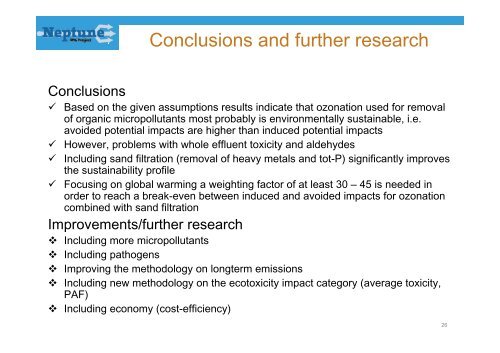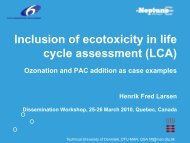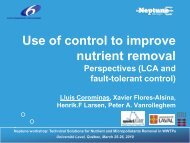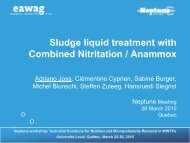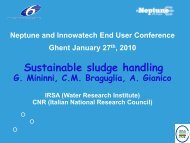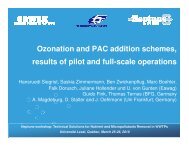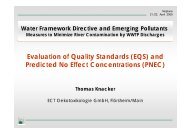Micropollutant removal - EU Project Neptune
Micropollutant removal - EU Project Neptune
Micropollutant removal - EU Project Neptune
- No tags were found...
You also want an ePaper? Increase the reach of your titles
YUMPU automatically turns print PDFs into web optimized ePapers that Google loves.
Conclusions and further researchConclusions Based on the given assumptions results indicate that ozonation used for <strong>removal</strong>of organic micropollutants most probably is environmentally sustainable, i.e.avoided potential impacts are higher than induced potential impacts However, problems with whole effluent toxicity and aldehydes Including sand filtration (<strong>removal</strong> of heavy metals and tot-P) significantly improvesthe sustainability profile Focusing on global warming a weighting factor of at least 30 – 45 is needed inorder to reach a break-even between induced and avoided impacts for ozonationcombined with sand filtrationImprovements/further research Including more micropollutants Including pathogens Improving the methodology on longterm emissions Including new methodology on the ecotoxicity impact category (average toxicity,PAF) Including economy (cost-efficiency)26


